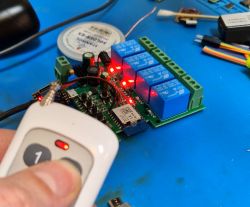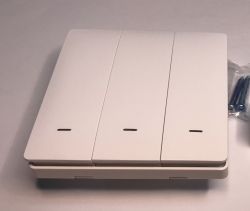Hi,
I don't have any experience with automation.
As for the software, I will use Home Assistant.
The flat is from the secondary market. I am planning a SMALL renovation in it, mainly to distribute ethernet from the control panel to each room. (In other words, I will NOT be extending the electrical installation). I would additionally like to add some cable that I can use in the future for potential automation solutions. In other words, such a cable would be distributed in a star system together with the ethernet cables. On a day-to-day basis, I would like to connect to such an installation:
1) Window reed switches (one switch per window, these are roof windows and the main idea is not to leave the windows open in case of rain) - from what I have read I need 4 cables for this
2) A "glass breakage" detector - I have read that 3 cables
3) Air conditioning control - I haven't looked into the subject yet, but I'd like to be able to turn it on/off/increase/reduce it
4) POTENTIALLY some kind of motion sensor in the corridor and some kind of front door opening sensor - I'm just stating this so that it's known in the context of cable selection, if it matters.
5) For the bathroom - a humidity sensor and a fan on/off - also not sure how many cables, I assume sensor 3 and fan 2.
The way I imagine it is that when I enter the room, I install a box where I separate the cables.
Part goes to the air conditioner "left". Part goes "right" to the other box under the windows. I'm connecting the reed switches in series because I don't care which exact window is open, I'm content to know which room the signal is coming from. I'd also like to connect the detectors in series, but I don't know yet if it will work that way?
In the future, if I wanted to attach something, it would be from the box. I would like to run twice as many cables as I will use for the solution described.
And finally, two questions
1) Will this work as I described above? In particular, will I be able to trickle cables in these cans?
2) What cabling should I use? I should add that the distances are not great, as they are in a flat. From a central point 40m max. Can I use twisted pair? Telephone cable? Something else? Shielded?
Thank you in advance for your answers.
I don't have any experience with automation.
As for the software, I will use Home Assistant.
The flat is from the secondary market. I am planning a SMALL renovation in it, mainly to distribute ethernet from the control panel to each room. (In other words, I will NOT be extending the electrical installation). I would additionally like to add some cable that I can use in the future for potential automation solutions. In other words, such a cable would be distributed in a star system together with the ethernet cables. On a day-to-day basis, I would like to connect to such an installation:
1) Window reed switches (one switch per window, these are roof windows and the main idea is not to leave the windows open in case of rain) - from what I have read I need 4 cables for this
2) A "glass breakage" detector - I have read that 3 cables
3) Air conditioning control - I haven't looked into the subject yet, but I'd like to be able to turn it on/off/increase/reduce it
4) POTENTIALLY some kind of motion sensor in the corridor and some kind of front door opening sensor - I'm just stating this so that it's known in the context of cable selection, if it matters.
5) For the bathroom - a humidity sensor and a fan on/off - also not sure how many cables, I assume sensor 3 and fan 2.
The way I imagine it is that when I enter the room, I install a box where I separate the cables.
Part goes to the air conditioner "left". Part goes "right" to the other box under the windows. I'm connecting the reed switches in series because I don't care which exact window is open, I'm content to know which room the signal is coming from. I'd also like to connect the detectors in series, but I don't know yet if it will work that way?
In the future, if I wanted to attach something, it would be from the box. I would like to run twice as many cables as I will use for the solution described.
And finally, two questions
1) Will this work as I described above? In particular, will I be able to trickle cables in these cans?
2) What cabling should I use? I should add that the distances are not great, as they are in a flat. From a central point 40m max. Can I use twisted pair? Telephone cable? Something else? Shielded?
Thank you in advance for your answers.






